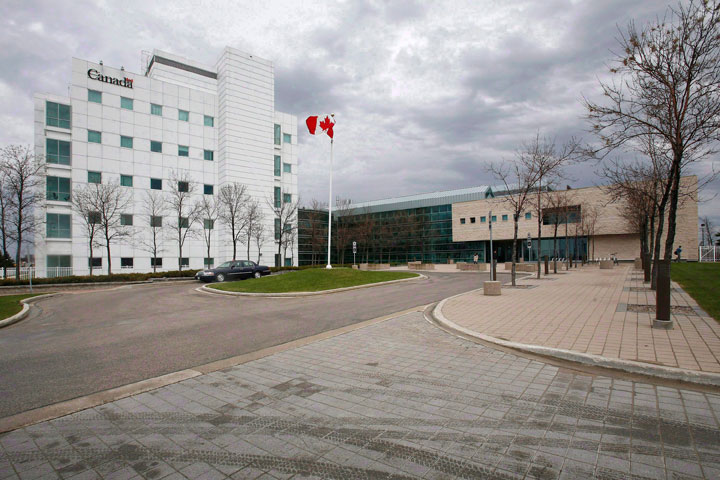WATCH ABOVE: Dr. Gregory Taylor, Canada’s Chief Public Health Officer, discusses the test for Ebola, its effectiveness, and why Canada has an advantage.

TORONTO – Many Canadians were alarmed when word got out Thursday night that a patient at a Toronto hospital was being tested for Ebola. But the country’s chief public health officer isn’t too worried.
“My understanding is the risk is low; we do not really strongly believe this person has Ebola, but we believe they need to have the test anyway,” said Dr. Gregory Taylor on Friday.
READ MORE: Canada prepping for potential Ebola cases
Toronto’s University Health Network (UHN) confirmed a patient who had recently travelled to West Africa was admitted to one of its four hospitals with a fever, and was put in isolation Thursday.
Staff are using protective equipment until the test results are in, and only a limited number of people are allowed into the isolation room.
So when will that be and how does the test work? We look at some questions around the Ebola protocol.
What is collected?
A blood sample was collected at Toronto General Hospital. From there, it has been sent to the National Microbiology Lab in Winnipeg.
“You just can’t send tubes of blood to the lab,” said Michael Gardam, director of infection prevention and control at Toronto’s University Health Network.
“So the process we’ve been going through is essentially taking blood, packaging it appropriately, connecting with the courier who actually takes the blood to Winnipeg and then the test is run there.”
When it comes to clean-up, the Centers for Disease Control in the U.S. says bleach and other hospital disinfectants kill Ebola, and the dried virus only survives for several hours on surfaces.
WATCH: How one hospital is prepared for the Ebola virus. Carey Marsden reports.
What’s the test called?
The Ebola test is done with a PCR – a polymerase chain reaction.
PCR-based tests have been around for roughly 20 years, says Gardam. The test looks at the genetic material from Ebola, and “if it’s there, they will detect it,” he said.
“That will make the diagnosis whether Ebola is there or not in three hours,” said Taylor.
Taylor was not aware of the technology involved in a new Japanese test that claims to provide results in 30 minutes, but has full confidence in the “standard test” used in Canada.
How good is the test?
Taylor said he’s sure false negatives or false positives won’t be a problem.
He said sometimes it’s necessary to repeat the test to confirm, but that “if it’s positive, it’s positive; if it’s negative, it’s negative.”
“We have the advantage because we’ve been working on this Ebola for many, many years. We’ve had teams going to Africa for many, many years—bringing the virus back, we’ve worked with the virus in our laboratory, doing experiment(s) in the local labs,” said Taylor.
Gardam added that in addition to testing, the screening process is extremely sensitive.
Gardam said there have already been “a few people tested” for Ebola without media reporting on the process.
Why does it have to be transported to Winnipeg?
The sample has been flown to the National Microbiology Lab in Winnipeg in a commercial plane that follows specialized procedures to ensure safe travel.
Taylor said currently, B.C. and Quebec are the two other provinces that have the capacity to test for Ebola, but others are on their way.
“Alberta, Ontario and Nova Scotia are going to come online shortly, and my understanding with Ontario is they will be capable of doing that preliminary testing in the next week or so,” he said.
Taylor said the preliminary test would rule out Ebola, but simultaneously a sample would be sent to the national lab in Winnipeg for “confirmatory testing.”
“The delay is simply transporting it, because these are infectious materials, and you have to be careful how they’re transported and protect the people who are transporting them,” said Taylor. “By having it done locally, it cuts out that time and makes it much more rapid actually to rule out Ebola.”
How do positive versus negative test results impact next steps?
Taylor explained suspected Ebola cases are treated as if they are in fact Ebola: The patient is put in isolation and blood work stops so as not to contaminate local equipment.
“In a case where it’s positive, then they would continue those procedures that they’ve already initiated at a hospital level.”
Gardam said in the case of the Toronto patient, the medical team will decide on next steps. The patient’s fever will need to be investigated, and other sorts of medical treatment unrelated to Ebola may be required.
With a file from The Associated Press



Comments